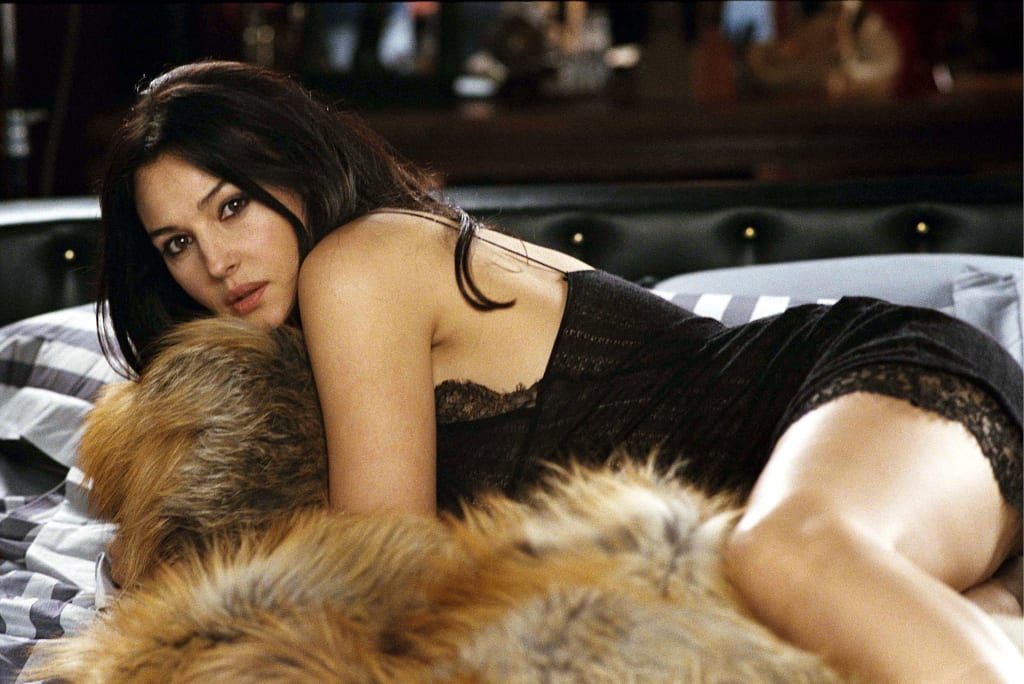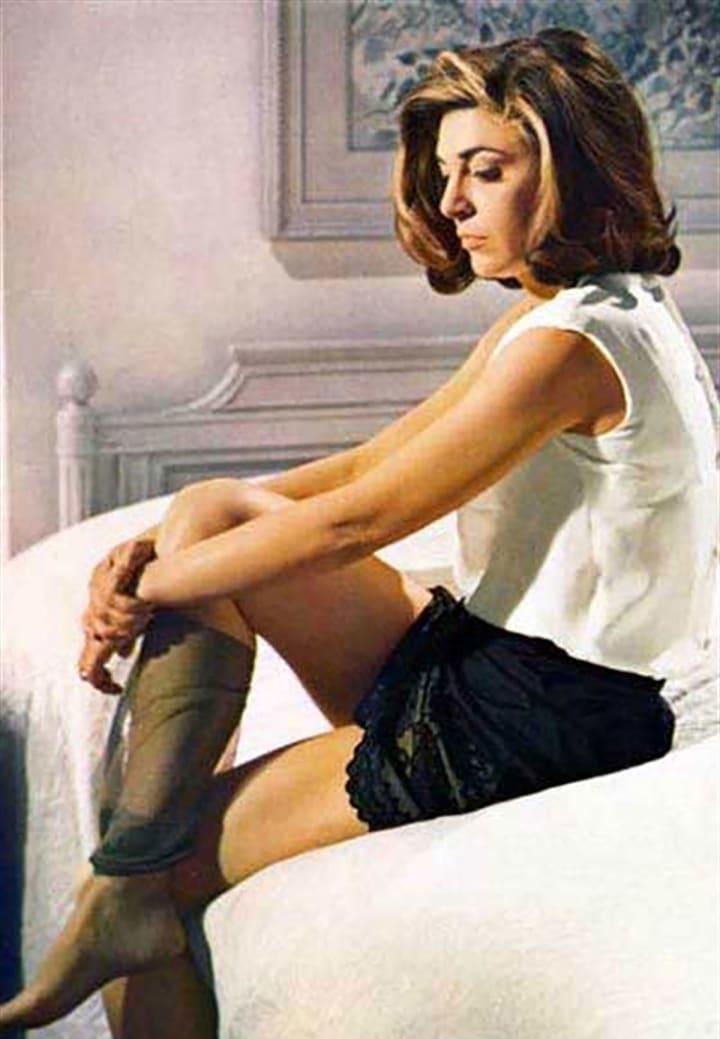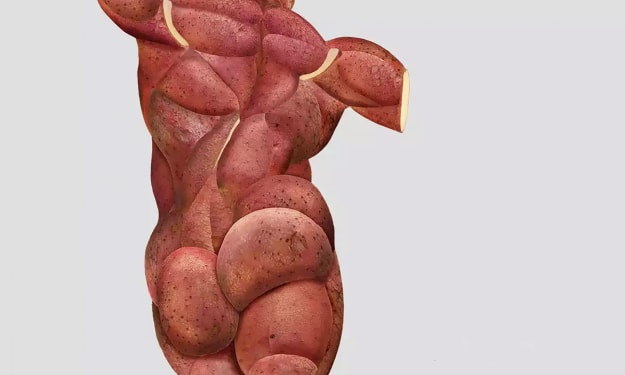Why Older and Wiser Looks Hotter and Hotter
The sex symbol grows up, becomes older and wiser, and hotter and hotter.

During the past 50 years, with increased life expectancy and the impact of feminism, we've witnessed a sea change in our concepts of sexuality, motherhood, and age-appropriate behavior.
Feminist Molly Haskell wrote, “Nowhere is this more evident than in the advanced age of movie stars who don't look advanced at all. Yet they dominate their marquees, playing a whole range of, sexually vital Women at an age when their predecessors would have been put out to pasture.” Think Jane Fonda on Grace and Frankie or Bond Girl Monica Bellucci.
Jean Harlow

Life magazine remarked about the 1943 film The More the Merrier, with obvious amazement, that the sexiest scene of the film was with a thirty-eight-year-old woman; Joel McCrea's front-porch flirtation with Jean Arthur. Once she hit 35, a woman was once expected to have settled down, had her children, even sprouted a few gray hairs. The cinema catered to youth, and the camera was cruel to aging. Fading looks meant fading fantasies, and audiences expected their stars to exist in an ideal, ageless zone. Women, for whom youth and desirability were synonymous, were the victims of an unspoken rule that decreed them finished as romantic leads by, say, their mid-30s. The very lives, as well as the careers, of the sex goddesses were particularly vulnerable. Jean Harlow died an untimely death at 26, two and a half decades later, Marilyn Monroe died prematurely at 36. It's doubtful that Harlow had many years left as a platinum-blonde temptress. With Monroe, the axis was shifting, but there was still a guillotine facing the blonde bombshell, and on the threshold of her late 30s, she was looking straight at it.
Melanie Griffith

The sex-goddess category more or less disappeared as women laid claim to their own sexuality. Even the gorgeous women of the 80s and 90s like Michelle Pfeiffer and Melanie Griffith, were less innocent than their counterparts of the 1950s and 1960s. Nor is motherhood the black hole into which aging romantic leads now fall, never to return.
Haskell explained, “In the past, stars knew they were finished once studio head handed them a motherhood role. Norma Shearer, her career tottering in 1941, refused to play Mrs. Miniver, knowing that once she was seen as a mother, she'd be blackballed for romantic leads. And Gloria Swanson once said that in the even more youth-oriented 1920s, the moguls encouraged, coerced is perhaps the better word, the glamour stars to keep their families under wraps.
We've always had a double standard toward aging. Lillian Gish summed it all up when she noted ruefully that she started by playing Lionel Barrymore's daughter in an early silent film, went on to play his wife in the 1930s; and finally, in Duel in the Sun (1947), played his mother."
Anne Bancroft

Yet the assumptions about maturing, becoming responsible, moving aside for the next generation, applied to men as well according to Haskell. In his late 20s and 30s, Clark Gable was a grown-up man wearing a grown-up suit and tie, and stayed that way—as compared with Dustin Hoffman, who at 30, was playing a scruffy coed in The Graduate. And speaking of The Graduate, remember the movie's puritanically horrified portrait of the “Older Woman," with Anne Bancroft all of 36 when she played the affair-minded Mrs. Robinson.
Hoffman was a middle-aged 42 when he played the father of a small child in Kramer vs. Kramer. During the 1930s or 1940s, a forty-two-year-old father, watching while his children went off to college, would smile benignly, as his own youth receded, at the thought that the next generation was ready to inherit his world. Nowadays, nobody moves over to make room for the young.
Merging of Age Groups

Teenager beauties are the casualty of this merging of age groups, for when everyone is young, no one is young. This might explain why adolescents, attempting to create a youth zone which is off limits to their parents, have retreated further and further into a technology driven alienating culture: the violence, graphic sex and splatter of horror movies, a genre that either excludes older parents altogether or ridicules them.
For adults, youthfulness isn't gained without a price, though. The pressure to stay young, attractive, and fit brings with it an anxiety greater than anything experienced by prior generations as they moved into preordained married and maternal roles. They competed for men and, once married, they could relax. There was something comforting about watching Myrna Loy move from smart young bachelor girl in the early 1930's to sophisticated married lady, in the Thin Man series, and then take her place gracefully as a mother at age 41 in The Best Years of Our Lives (1946).
Meryl Streep

Today's women feel much younger at 40 than their mothers did and acknowledge their sexuality more frankly. They aren't about to surrender the freedoms and opportunities they've won. Meryl Streep is more self-assured, than she was decades ago. They've had a chance to develop their talents in a way that earlier stars, cut off just as they reached their peak, never did.
Ironically, this late blooming phenomenon was spurred by the movie industry itself, and the length of time it takes to get a career going. It's a different terrain now. Months could pass between the power breakfast pitch and actual shooting, and months more could be spent shooting on location. There are no huge studios with stars under contract and huge departments to publicize them, except when they release a new film. Stars must do their own promoting, and with fewer movies about adult women, they may not hit their professional stride, or become “bankable," until well into their 30s. Being older, and having spent much of their lives away from the hothouse world of Hollywood movies, they bring with them a sense of real-life experience, of having “been around."
Ellen Barkin

Think of the marvelous un-baby faces of Christine Lahti or Ellen Barkin, who exudes sexy on Animal Kingdom. The different lives they've lived add to their magic: relationships, marriages, divorces, time spent in therapy, career shifts, honesty about their problems, their men. During the 1930s and 1940s, virginity was the hallmark of desirability.
Sexual experience Molly Haskell postulated "marked a woman as used-up and therefore eligible only for lurid dramas. Now an innocent looking woman would bore us to death or induce disbelief. Kathleen Turner in Peggy Sue Got Married and Jessica Lange in Everybody's All-American aren't quite plausible as dewy-eyed teenagers. It's not that they look old, but that they project an aura of wisdom, insight, ruefulness, and grown-up sexuality that no teenager ever had. We notice, with a trace of regret, that Amy Irving, in Crossing Delancey, no longer possesses that petal-like freshness she once had. But her willingness to look wan and desperate as a 30s-plus single woman with whom other women can readily identify more than makes up for the loss."

Lesbian added a new level of sexuality and mystery. Cher came as close as anyone does to the old-style, self-made glamour queen, dependent on the bright lights to bring her to life. Her most memorable performances have been as low-rent dames. She was far more riveting and attractive in Mask as the harried lower middle-class mother of Eric Stoltz's disfigured freak, and in Silkwood as the working-classes lesbian friend to Streep, than in Moonstruck, where she was cosmetically perfect and less interesting. Today even more so, we want to see women in natural tones, less created and turned out, less mythological, but without forfeiting the joy of watching the sexiness mature throughout a woman's life.
Women are finally getting the latitude of men in the film industry. The cinema is, and has always been, a medium more interested in the young than the old and more in surfaces than souls. Our sense of what makes an attractive surface though, has changed, thanks to the presence of women of 50 or 60, who are brainy and assertive, experienced in life, and radiant with desire and desirability. It isn't until middle age, Carl Jung wrote, that our lives acquire meaning and take shape. This is even truer for women who are finding their own voices well into their 40s and 50s. They are staking claim to a sense of self that is no longer defined by particular relationships. With a new generation of creatives migrating from the movie business to the digital screens in our pocket, the opportunities for women seem to be growing at exponential rates. It is a fine experience as fans watching the changing tides and the new spirit of screen goddesses.
About the Creator
Alicia Springer
Mother of two. Personal trainer. Fitness is about determination, not age.






Comments
There are no comments for this story
Be the first to respond and start the conversation.